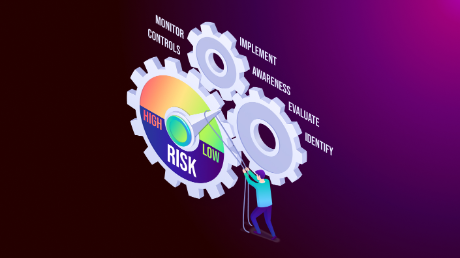
The concept of operational risk in banking is undergoing a fundamental redefinition. Traditionally, it referred to risks arising from internal processes, human error, or external disruptions. But in today’s financial ecosystem, driven by fintech innovations, the looming introduction of central bank digital currencies (CBDCs), and the persistence of legacy banking systems, operational risk has taken on a broader, more complex dimension.
Fintech has brought speed, efficiency, and innovation to financial services, but its rise has also expanded the attack surface for vulnerabilities. Digital-first platforms rely on cloud infrastructure, APIs, and third-party integrations that, while agile, introduce risks around cybersecurity, data privacy, and system reliability. Banks partnering with fintech firms must navigate these challenges carefully, ensuring that the pursuit of innovation does not come at the expense of resilience.
CBDCs represent another major shift. While they promise to modernize payments and enhance monetary sovereignty, their integration into existing financial systems poses unprecedented operational risks. Central banks and commercial banks will need to manage new forms of infrastructure, cross-border interoperability, and large-scale transaction volumes. The risks range from system outages and cyberattacks to governance failures in ensuring privacy and compliance. For commercial banks, CBDCs may also introduce disintermediation risks, heightening the need to adapt their operating models.
At the same time, many financial institutions still rely on legacy systems—outdated core banking platforms that struggle to keep pace with digital transformation. These systems are prone to outages, difficult to integrate with modern technologies, and costly to maintain. When combined with fintech partnerships and CBDC rollouts, legacy infrastructure becomes a critical weak point, amplifying risks of system failures, operational bottlenecks, and regulatory breaches.
From a geopolitical perspective, the digital euro is also a strategic move. It positions Europe to reduce reliance on foreign payment systems, safeguard monetary sovereignty, and strengthen resilience against financial disruptions. At the same time, the ECB is cautious about roll-out speed, aiming to avoid risks to financial stability while ensuring technological robustness.
Regulators are responding by tightening operational resilience frameworks. Supervisory bodies across the EU, U.S., and Asia are issuing guidelines that emphasize third-party risk management, cyber resilience, and robust testing of critical systems. Stress testing for operational risk is gaining prominence, with regulators expecting banks to demonstrate not just capital adequacy but also the ability to withstand disruptions in digital ecosystems.
To manage these challenges, banks are adopting multi-layered risk strategies. Investments in real-time monitoring systems, advanced analytics, and AI-driven anomaly detection are becoming essential. Some institutions are moving toward hybrid infrastructure models—balancing legacy systems with cloud-native solutions to minimize disruption risks. Others are forming strategic partnerships with fintechs focused on cybersecurity and compliance rather than just customer-facing innovation.
Ultimately, the redefinition of operational risk reflects the intersection of innovation and vulnerability. Fintech and CBDCs promise transformative opportunities, but they also expose weak points in infrastructure and governance. For banks, the challenge is not merely to comply with regulations but to build resilient, adaptive systems capable of thriving in a rapidly evolving financial environment.
As the financial ecosystem continues to evolve, operational risk will remain a central determinant of competitive advantage. Those institutions that successfully navigate the vulnerabilities of fintech integration, CBDC adoption, and legacy system limitations will be best positioned to lead in the next era of global banking.

Jessica Wright
Junior Editorial
Email: jessica.wright@theempiretimes.org
All stories by : Jessica Wright


















3 Comments
Ruth M. Reed
August 29, 2025 at 8:24 pmClear and timely analysis—this really helps make sense of recent market movements.
ReplyPhillip C. Baker
July 21, 2025 at 10:44 pmImpressive to see how much Big Tech is investing in R&D this year. 2025’s shaping up to be a turning point.
ReplySarah T. Coleman
July 11, 2025 at 14:44 pmGreat coverage on U.S. AI policy—finally some clarity for global investors.
Reply